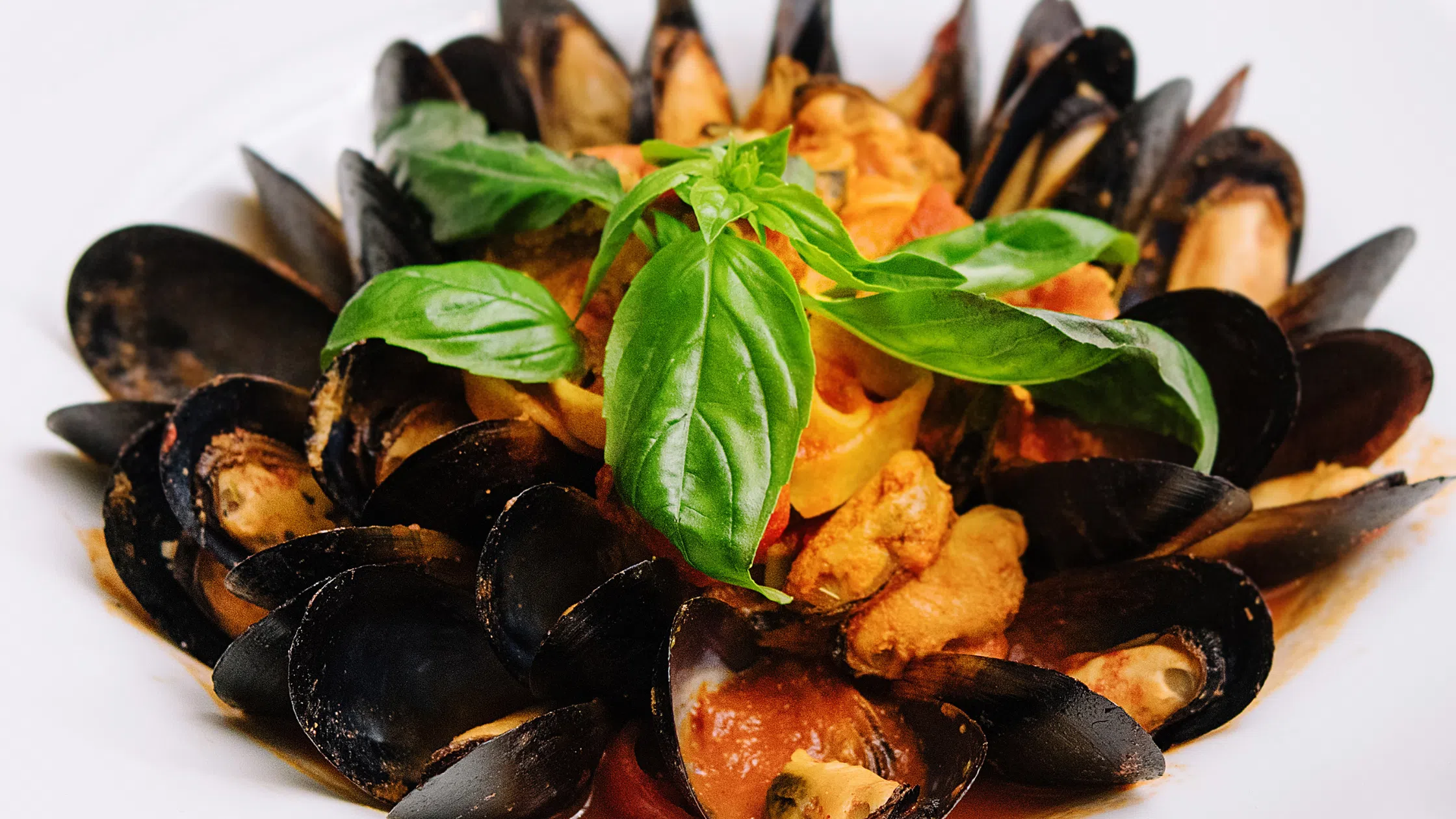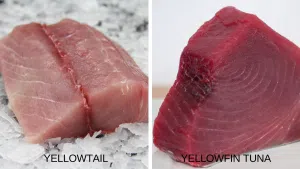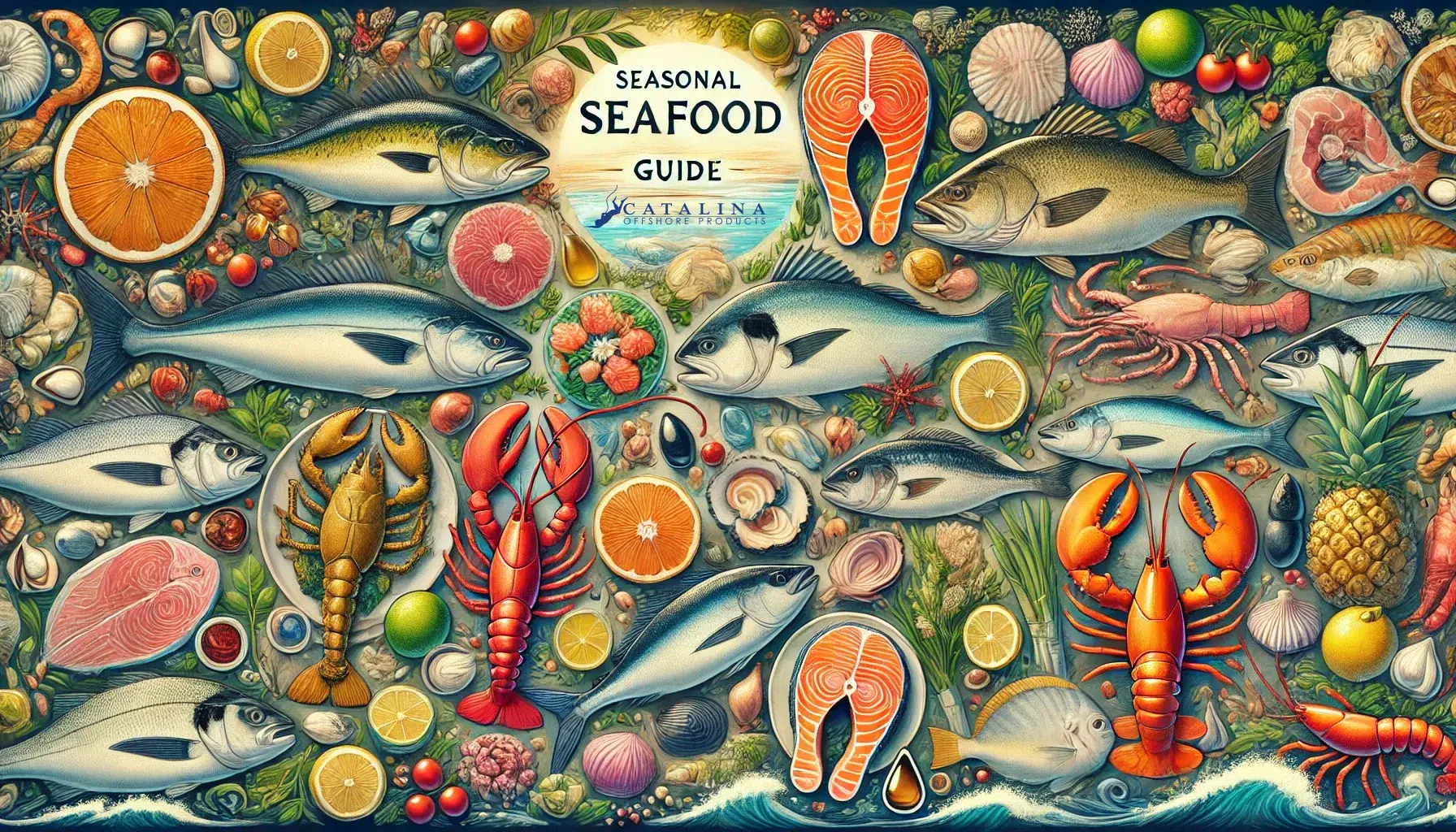
Savor the Sea: How to Make Mussels In White Wine Garlic Delight
Picture this: the sun dips below the horizon, casting a golden glow across the ocean while you sit at a seaside bistro, savoring each exquisite
FREE Overnight Shipping on orders over $300 ($200 in CA. Some suburbs are not included).
Yellowtail and yellowfin often get confused. In this post we’ll explain the difference between yellowtail vs yellowfin tuna…
The seafood industry has long been challenged by mislabeling. Sometimes it unfortunately happens with intent. For example, when a sushi bar calls escolar “white tuna”, even though albacore is the only fish that can claim that moniker. Other times, it’s done because people inadvertently commingle names, or use incorrect names, simply because they don’t know better.
From recipe blogs to internet articles to restaurant menus, we can’t tell you how many times we’ve seen yellowtail written incorrectly as “yellowtail tuna”. Folks, there is no such thing as a yellowtail tuna. It can only be a yellowtail, or a tuna. It cannot be both!
Let’s dive deeper.

Incorrect usage of “yellowtail tuna” likely stems from yellowfin, which is a type of tuna.
Sushi grade yellowfin tuna features a signature red color that ranges from juicy pink to deep cherry or garnet red. This meat is commonly used for tuna sashimi and sushi (maguro), poke, and cooking applications that call for leaving the fish slightly raw in the middle. Cooking grade yellowfin tuna appears reddish-brown. Although sushi grade yellowfin will naturally turn brown once exposed to air if not properly stored.
Yellowtail is a type of amberjack. Farmed yellowtail flesh ranges from creamy beige to pale pink, while wild yellowtail appears darker beige or pink to soft red. When compared side by side, it’s easy to see the differences between yellowtail vs yellowfin tuna.
Yellowfin tuna (Thunnus albacares) is known in the Hawaiian language as ahi. Bigeye tuna (Thunnus obesus) is also called ahi.
Amberjacks are part of a very large family of different fish species known as Jack Fish or Jacks. This includes California yellowtail (Seriola lalandi), longfin yellowtail (Seriola rivoliana), Japanese yellowtail (Seriola quinqueradiata), and Greater amberjack (Seriola dumerili). The latter is found in the Western Atlantic and has the unfortunate reputation of being inedible. Do not confuse it with the other highly regarded, extremely tasty species!
Japanese words may be more recognizable to sushi lovers: Hamachi is Japanese yellowtail; kampachi or kanpachi is longfin yellowtail; and hiramasa refers to the California yellowtail species, which is the same species as Australia and New Zealand’s “kingfish.”
All of this is why it’s so important to identify a reputable fishmonger in your area or an online seafood source you can trust. Don’t be afraid to ask questions at restaurants, sushi bars and fish markets. If you see “yellowtail tuna” listed on a menu, we encourage you to politely correct their mistake!
We’ll add that the term “yellowtail tuna” persists as a joke among fishermen. The fish is described as an elusive, mythical creature. As in, there are anglers who claim to have caught one, yet no other angler has ever seen one. Go figure!
Farmed yellowtail flesh ranges from creamy beige to pale pink, while wild yellowtail appears darker beige or pink to soft red. Sushi grade yellowfin tuna features a signature red color that ranges from juicy pink to deep cherry or garnet red. This meat is commonly used for tuna sashimi and sushi (maguro), poke, and cooking applications that call for leaving the fish slightly raw in the middle. Cooking grade yellowfin appears reddish-brown. Although sushi grade yellowfin will naturally turn brown once exposed to air, if not properly stored.
Though not all fish is sushi grade, both yellowtail and yellowfin are available in sushi/sashimi grade quality when bought from a reputable fish market, and both make great additions to any sushi night at home.
Check prices here:
When it comes to taste, yellowtail vs yellowfin is a tough call. Both have a moderate flavor, and yellowtail is generally considered to have a rich, buttery mouthfeel. But, the best way to decide which has the better flavor, is to try them for yourself!
Check prices here: Sushi Grade Fish
Because yellowtail and yellowfin tuna are completely different species, deciding which one is better is a matter of personal preference. Both have a delicious, moderate flavor. Yellowfin tuna is a bit firmer in texture, no matter if it’s farmed or wild. Farmed yellowtail has a richer, buttery mouthfeel. Many people like yellowfin for its red color, which makes for eye-catching presentations.
Ask for sushi grade yellowtail from a reputable fish market in your area, or purchase it from a trusted online source, such as Catalina Offshore Products.
Check price here: Sushi Grade Yellowtail (Hamachi)
Ask for sushi grade yellowfin tuna from a reputable fish market in your area, or purchase it from a trusted online source, such as Catalina Offshore Products.
Check price here: Sushi Grade Yellowfin (Ahi)

Picture this: the sun dips below the horizon, casting a golden glow across the ocean while you sit at a seaside bistro, savoring each exquisite

The Conservation Benefits of Deep-Set Fishing At Catalina Offshore Products, sustainability isn’t just a buzzword—it’s a commitment. As a small family-owned company, we pride ourselves

As we journey through the latter half of the year, each month presents us with an array of fresh seafood delights. From the vibrant flavors of summer to the comforting dishes of winter, choosing and preparing the perfect fish or shellfish can truly elevate your meals. Here’s your comprehensive guide to selecting and cooking the best seasonal seafood from August to December.

Savor the Sea: How to Make Mussels In White Wine Garlic Delight
Picture this: the sun dips below the horizon, casting a

The Conservation Benefits of Deep-Set Fishing: A Sustainable Seafood Solution
The Conservation Benefits of Deep-Set Fishing At Catalina Offshore Products,

Your Ultimate Seasonal Fish Guide: Savor the Freshest Catches from August to December 2024
As we journey through the latter half of the year, each month presents us with an array of fresh seafood delights. From the vibrant flavors of summer to the comforting dishes of winter, choosing and preparing the perfect fish or shellfish can truly elevate your meals. Here’s your comprehensive guide to selecting and cooking the best seasonal seafood from August to December.